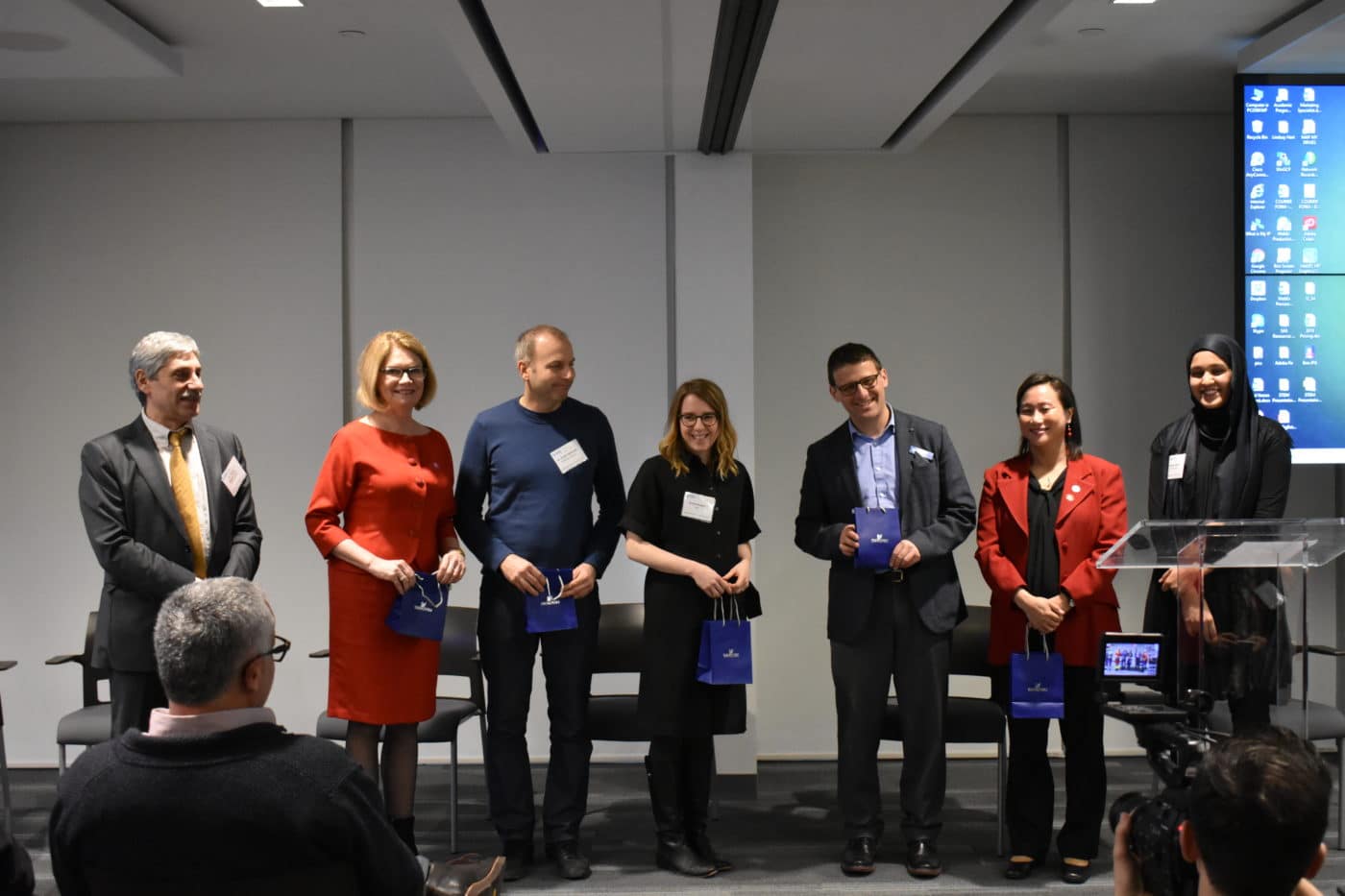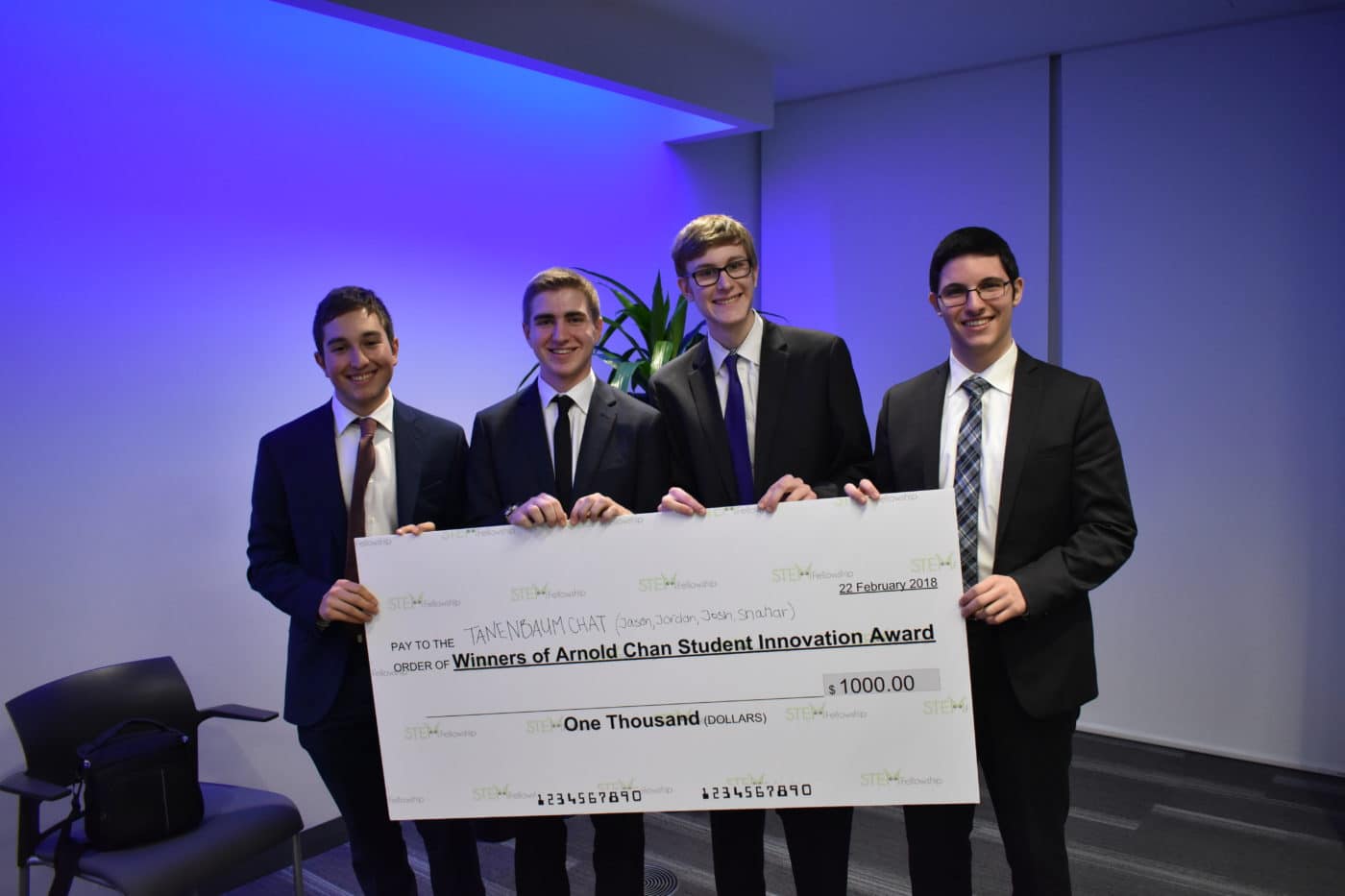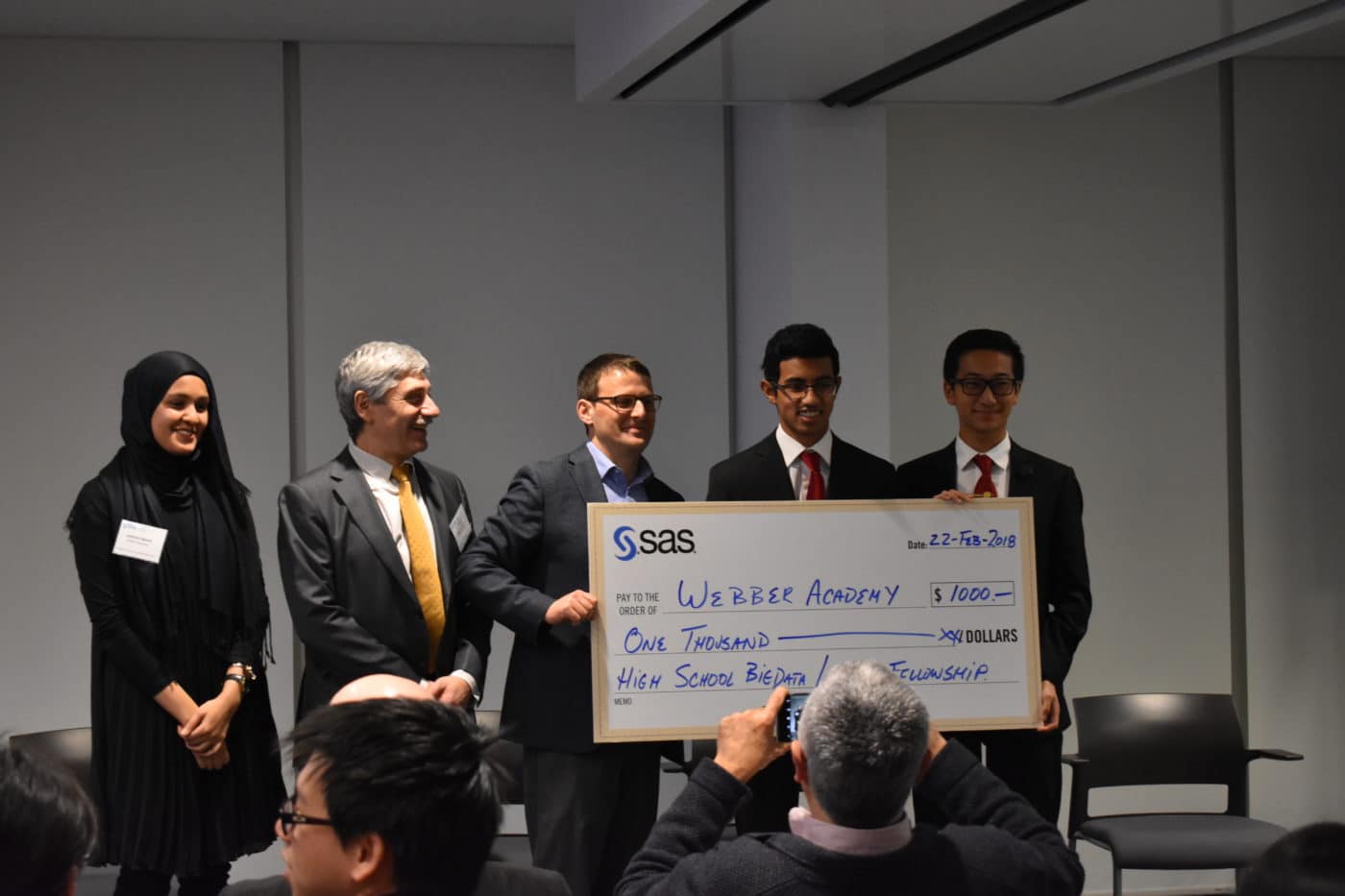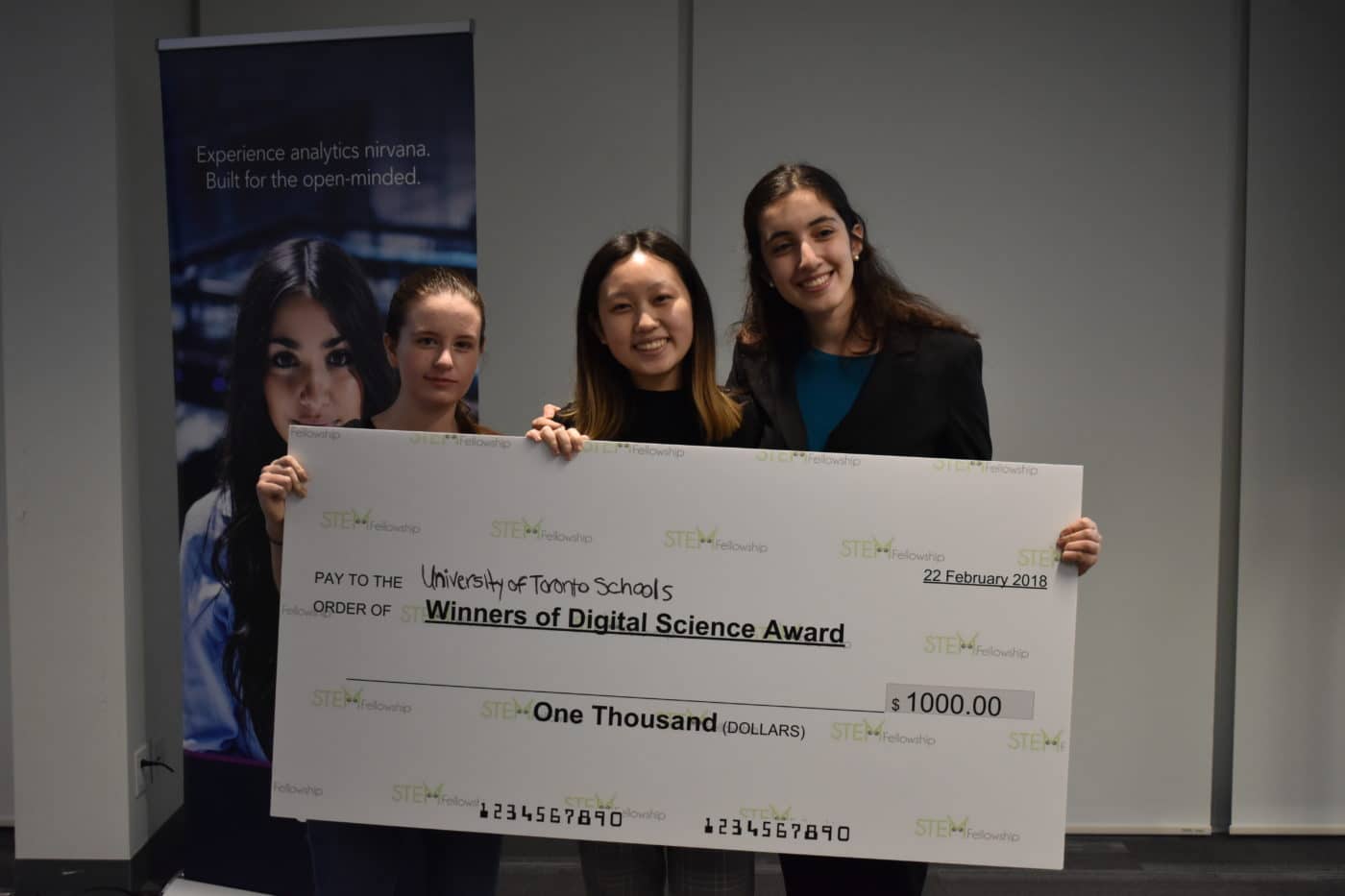Subscribe to our newsletter
STEM Fellowship Big Data Challenge Winners
STEM Fellowship’s High School Big Data Challenge sees the tech-native generation put their data analysis talents to the test and grow into digital citizens. The theme for this year was “Think Global – Act Local”, and addressed the issues facing sustainable development around the world.
The challenge involves teams of high school students tackling a question and writing a paper on their choice of topic for the year’s theme. The papers are then read and the top-scoring ones are presented at SAS headquarters for a chance to win prizes.
While all the papers submitted this year were interesting and insightful, awards were given to research that was of exceptional quality.
The late Right Honourable Arnold Chan was a huge part of the reach and impact of last year’s Big Data Challenge. To honour him and his contribution, RBC sponsored the Arnold Chan Student Innovation Award this year – and it went to TanenbaumCHAT’s team with Jason Arbour, Jordan Juravsky, Shahar Lazarev, and Josh Zwiebel.
TanenbaumCHAT created an investment plan for greener Canadian energy. They established a greenhouse gas emissions cap and then used neural networks to predict the cost of energy of Canadian wind, solar, and hydro, as well as that of coal and natural gas. Using neural networks, they also created a model of electricity demand in Canada. By analysing these models together, keeping in mind their emissions cap, they developed an ideal investment plan. With this plan, the cost-efficiency of renewable energy in Canada will outweigh that of fossil fuels by the time the emission cap is reached, allowing for an emission-free future.
The SAS Analytics Award went to the team with exceptional analysis – Webber Academy’s Aaron Abraham and Kevin Lin.
The duo aimed their study at factors relating to violent crime in the United States. Using five different machine learning models, they predicted which variables were most correlated to high crime rates and found that they could be traced back to limited resources, difficult living conditions, and psychological harm. Their models showed that family dynamics played a large role in determining crime rates. Understanding patterns in violent crime can help law enforcement allocate their resources more effectively and can give a boost to preventive efforts.
The Digital Science Award, from Altmetric, Overleaf, and Figshare, was awarded to the team from University of Toronto Schools – Katherine Gotovsky, Alain Lou, Arielle Shannon, Jing Yi Wang.
This team ran a broad investigation of data from weather stations and from NASA with the intention of identifying the optimal locations for solar farms in Ontario. Using weighted values for factors such as humidity, cloud coverage, and temperature, they were able to identify trends in photovoltaic efficiency and pinpoint locations that promised optimal locations for solar farms. Their research can be used in the development of renewable energy sources as well as the optimization of existing solar panel farms.
Last but certainly not least, Tony Xu and Shayan Khalili from Earl Haig Secondary School were invited to the SAS executive box for a TFC game and networking opportunity.
They ran a multi-faceted analysis of demographics’ effect on greenhouse gas emissions and used data from over two hundred countries and twenty years. They found that the urbanized, wealthy meat-lovers had the greatest carbon footprint. Their insightful conclusions can change the way we approach developing a solution to climate change and reveal what factors are most important in the quest for sustainability.
Find out more about the Big Data Challenge here.
Authors:
Michal Fishkin and Dr Sacha Noukhovitch




